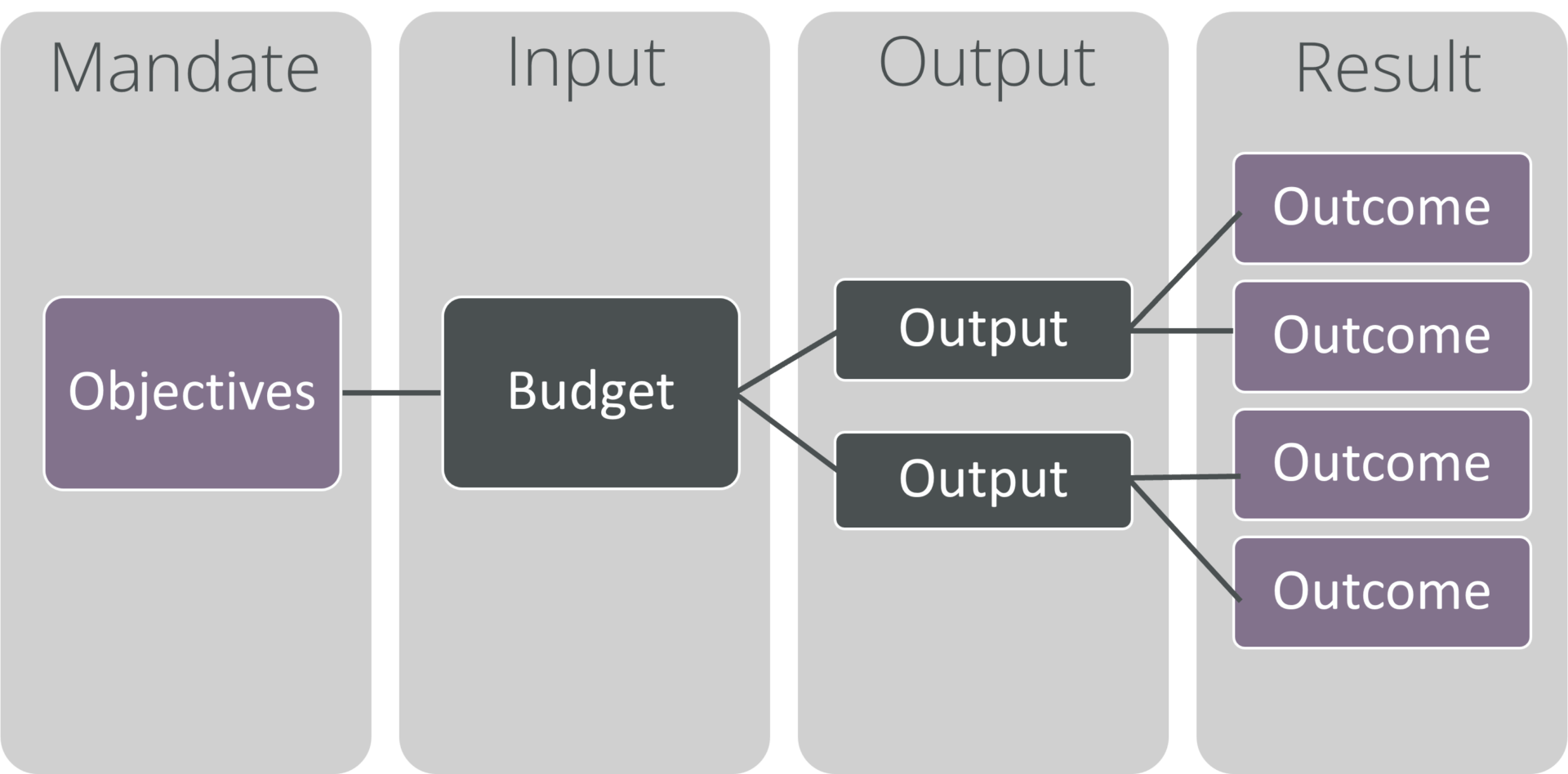Many think “government performance” is an oxymoron and it would be relatively easy to achieve if only they adopted private sector practices.
Corporate Performance Management vs. Government Performance Management
Corporate performance can be improved thanks to the bottom line of profit, however, governments don’t have the benefit of a bottom line. In the public sector, the results are outcomes – for example, lower inequality, better healthcare, etc.

In addition, governments face many challenges that further complicate performance. These include:
- Scope and Scale
- Governments run more “lines of business” than any business
- Scope
- Governments do not have any definitive bottom line like profit
- Budgets must be tied to performance because governments run commitment accounting
- Scale
- Cascading complex objectives through MDAs and divisions to individual public servants is complex because there are so many staff members
Government Performance and Medium-Term Expenditure Frameworks
In order for governments to actually deliver on their mandates and deliver services to citizens, budgets have to be tied to performance. Whereas budgets are guidelines in the corporate world, in government they are the law. Therefore it it critical not only that budgets are formulated and executed efficiently, but also that there is a clear line between objectives, budgets and performance.
Governments, however, run a single year budget cycle. Which makes tying results to budgets almost impossible as policy objectives are unlikely to be achieved in such a short time frame. Hence the use of Medium-Term Expenditure Frameworks (MTEF).
What Are Medium-Term Expenditure Frameworks?
Medium-Term Expenditure Frameworks (MTEFs) help to overcome the limitations of the government’s annual budget cycle by adopting a medium term perspective and incorporating spending ceilings into long-term plans. This links investment decisions with available resources over an extended period of time allowing for resource allocation to be aligned with national goals.
Complexity of Medium-Term Expenditure Frameworks
Multiple-year budget planning is considered a PFM good practice. Comprehensive MTEFs include macroeconomic, sectoral and performance frameworks. In principle, this enables planning based on national objectives. The plan characteristics are reflected in all spending and results.
The difficulty that many governments face is cascading performance concepts through the revenue and expenditure lifecycles. These governments have acquired separate financial, human resources, tax administration and procurement systems. Different platforms. Different metadata. Many of these applications have no visibility or connection to controls or performance criteria.
The Importance of Unified Data
Government performance management is not something that can be sustained by using stand-alone software. Or, software designed for the private sector. A unified approach across the budget cycle is required. This consists of transparency, back-office and metadata layers that need to be more than integrated. Systems and data need to be tightly unified to ensure proper controls and full automation – such as is in the case of the FreeBalance Accountability Suite™.
To speak to a PFM expert on how FreeBalance can help drive Public Financial Management reform in your country, please get in touch.
